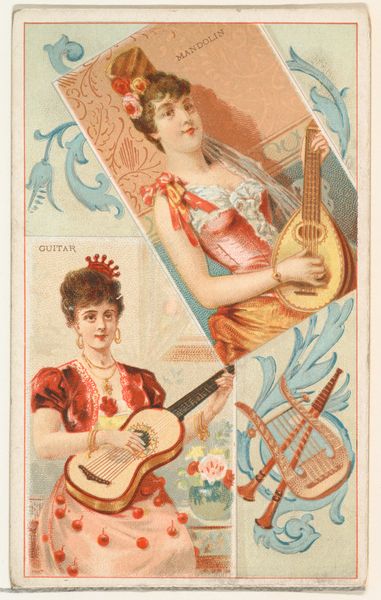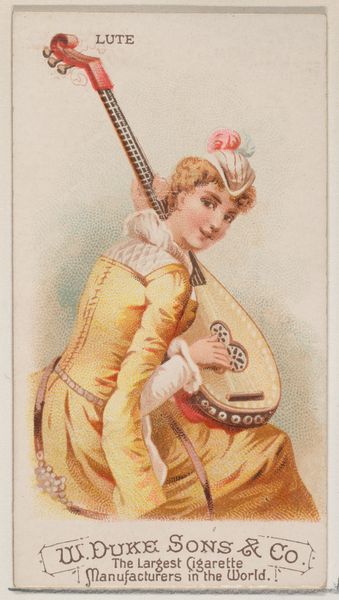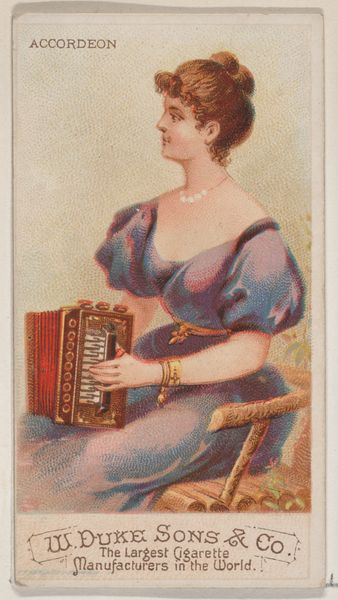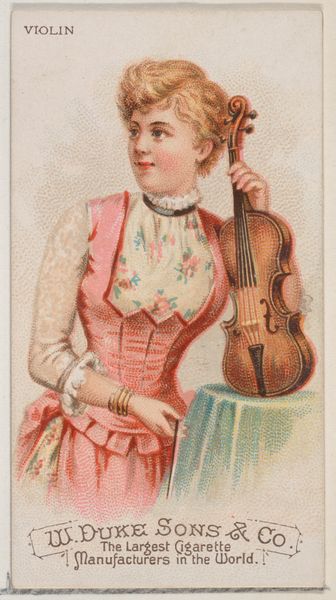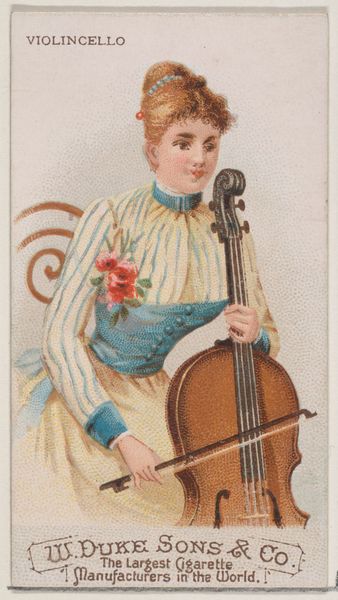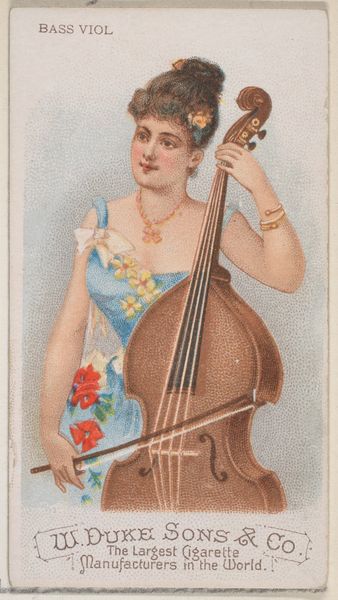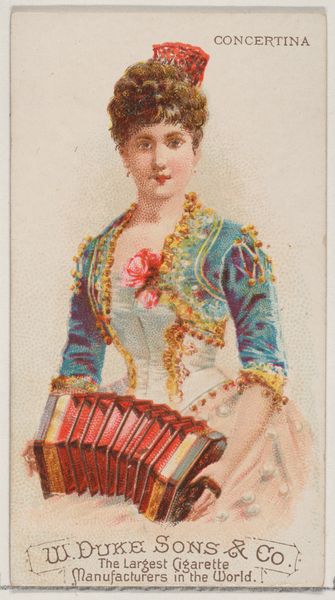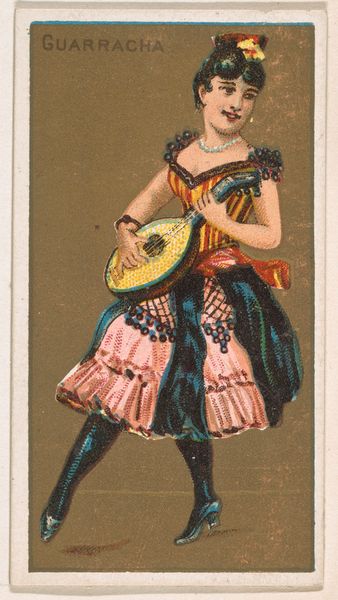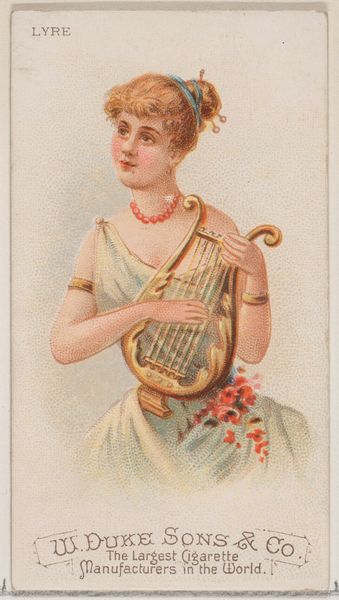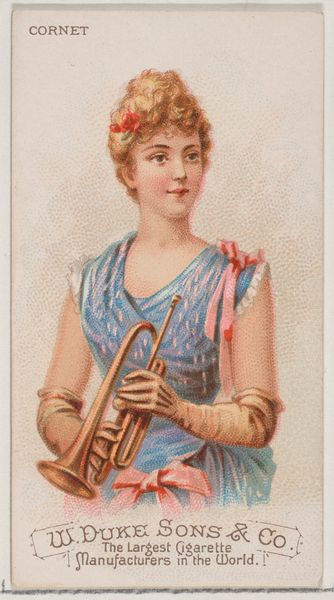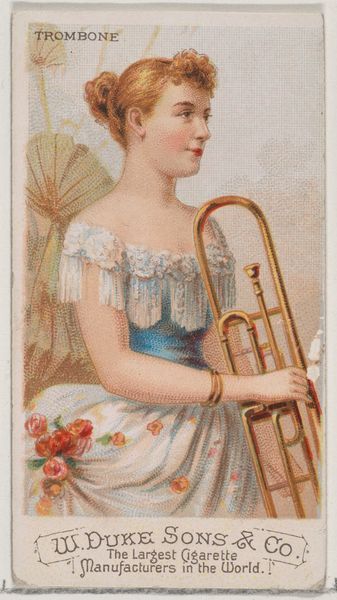
Mandolin, from the Musical Instruments series (N82) for Duke brand cigarettes 1888
0:00
0:00
#
portrait
#
water colours
# print
#
figuration
#
oil painting
#
coloured pencil
#
musical-instrument
#
watercolor
Dimensions: Sheet: 2 3/4 x 1 1/2 in. (7 x 3.8 cm)
Copyright: Public Domain
Curator: Let's turn our attention to this enchanting little card. It’s titled "Mandolin," part of the Musical Instruments series (N82) by W. Duke, Sons & Co., dating back to 1888. Editor: It’s so charming! There’s a definite sweetness about it, even saccharine perhaps. The young woman, poised with her mandolin, is depicted with such idealized features; it feels less like a portrait and more like a dream. Curator: Precisely! These cards were originally inserts in Duke brand cigarette packs. Think about it—how does art function within the rise of consumer culture, mass production, and even something as everyday as a cigarette packet? The company's slogan underneath: "The Largest Cigarette Manufacturers in the World" clearly contextualizes its politics. Editor: It really frames how imagery becomes commodified, right? The woman herself becomes another product to be consumed, much like the cigarettes she's advertising. She's posed in this idealized, almost hyper-feminine way – the frilly corset, the ornate hat with the flowers, and that carefully crafted air of delicate gentility. I imagine many young women at that time found it oppressive to conform to these limited stereotypes. Curator: It is quite revealing. Duke leveraged Japonisme – we see that aesthetic particularly in the background – to appeal to a sophisticated, cosmopolitan consumer base. But beneath that exoticism, there are also implications related to gender and class. A lady posed playing an instrument as a symbol of leisure… Who has access to leisure? Whose image gets circulated? Editor: Definitely. And the printing itself is quite beautiful. You’ve got colored pencil and print… but something about the oil painting gives the surface that hyperrealistic glow; the almost porcelain quality of her skin against the backdrop almost makes the artwork stand out against similar printed materials of the time. Curator: Indeed. This "Mandolin" card, seemingly innocuous, reveals how art actively participated in shaping desires, projecting social status, and even reinforcing gendered expectations at the dawn of mass advertising. Editor: Thinking about it now, I’m a bit uncomfortable knowing this was advertising for a cigarette company – given what we know now about smoking and health. It sort of taints my initial positive impression, makes it feel a bit exploitative overall. Curator: And that unease, I think, is precisely what we need to engage with. It shows the ever-present relationship between art, commerce, and our understanding of social responsibility, then and now.
Comments
No comments
Be the first to comment and join the conversation on the ultimate creative platform.

